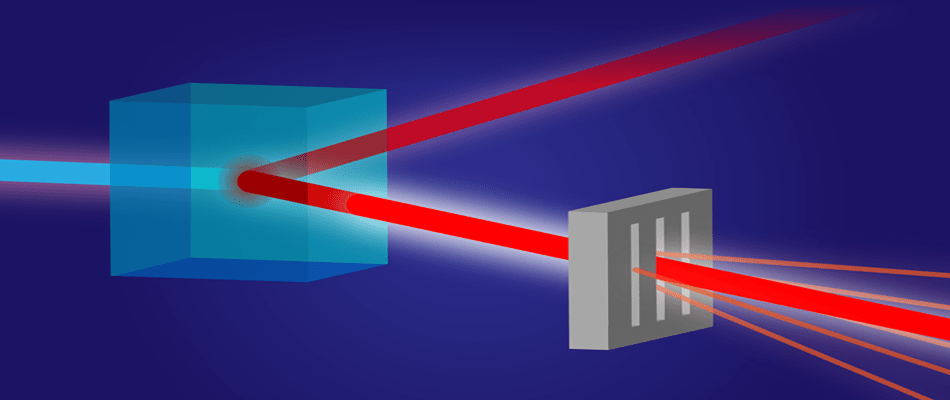
Image credit: Alan Stonebraker
Recent advances in Quantum X-ray technology have enabled a team of researchers to demonstrate quantum enhancement in an existing x-ray machine. This could mean the reduction of background noise and radiation required for x-ray imaging as well as enhancing the precision of current imaging techniques.
The evolving field of quantum imaging has exciting potential, especially as it utilizes optical light to https://www.archives.gov/records-mgmt/agency/departments/defense, like bones and organs. This is down to the exploitation of the relationships between photon pairs on quantum scales which can generate much higher-resolution images than standard optical systems.
Quantum correlation expresses a number of different relationships between photon pairs. One of these is entanglement which is applied in optical quantum imaging. Thus, quantum optics has shown the ability to use quantum states of light to vastly improve the quality of measurements when illuminating a subject – this can then by extension be applied to the x-ray range of the electromagnetic spectrum.
Extending these ideas to x rays would have key advantages.
Sharon Shwartz, Bar-Ilan University, Israel
For example, x-rays can image with atomic resolution and can probe the structure of atomic nuclei, features inaccessible to experiments with visible light, he says. However, no one has yet developed a source of quantum correlated x-ray photons. This is because there are much more technical hurdles to overcome when attempting to generate entangled photons in x-ray wavelengths compared with those required for optical light. This led to the team making alterations in their approach when attempting to construct their quantum x-ray.
Shwartz and his team took to exploiting a process known as parametric down-conversion (PDC), a technique typically used to create entangled visible photons. In this process, one “pump” photon propagating in a crystal splits into two photons whose combined energy matches the pump photon’s energy.
"X-ray PDC has been demonstrated by several authors, and the application of the effect as a source for ghost imaging has been demonstrated recently," the researchers state in their study.
Under the right conditions, the emitted photons are correlated at the quantum. However, this is not the best process as it proves to be inefficient at x-ray wavelengths. To generate a sufficient number of correlated photon pairs, the researchers turned their attention to one of the world’s brightest high-energy x-ray sources, a beamline at the SPring-8 synchrotron in Japan.
The team converted the beamline’s bright 22 keV photon beam into two beams, both with photon energies of around 11 keV, using the PDC of a diamond crystal. The two beams, which exited the crystal at different angles, were used as the ancillary and signal beams of a quantum illumination scheme. The researchers then observed and recorded the arrival time and energy of each photon and discovered that an ancillary photon always arrived in sync with a signal photon, and their energies always added up to 22 keV.
The perfect time-energy relationship we observed could only mean that the two photons were quantum correlated.
Sason Sofer, Bar-Ilan graduate student and team member
As the researchers continued in their work, they discovered much sharper images as they compared the detections discovering that there were only around 100 correlated photons per point in the image, and around 10,000 more background photons. This is due to effects such as x-ray fluorescence.
This breakthrough could mean a leap into the future for quantum x-ray technology, and whilst it is still in a nascent state the applications and advantages can exceed that of just merely reducing background radiation required for x-ray imaging. It could mean that samples normally easily damaged by x-ray imaging could be captured. Marco Genovese, a quantum optics expert at the National Institute for Metrology Research in Italy, hails this “technological breakthrough,” further stating, “This may be especially useful for imaging with very few photons in biological samples, which are easily damaged by x-ray radiation,” he says.
If continually successful, the efforts of the team could also lead to physicists possessing the ability to x-ray atomic nuclei.
The next step for the team is to determine whether or not the photons are entangled. Yet, this is beyond the realms of possibility as the current technology doesn’t permit the measurement of the process within attosecond scales. However, the team are still buoyed by their latest discovery and anticipate the work will head towards “more quantum enhanced x-ray regime detection schemes, including the area of diffraction and spectroscopy."
Disclaimer: The views expressed here are those of the author expressed in their private capacity and do not necessarily represent the views of AZoM.com Limited T/A AZoNetwork the owner and operator of this website. This disclaimer forms part of the Terms and conditions of use of this website.